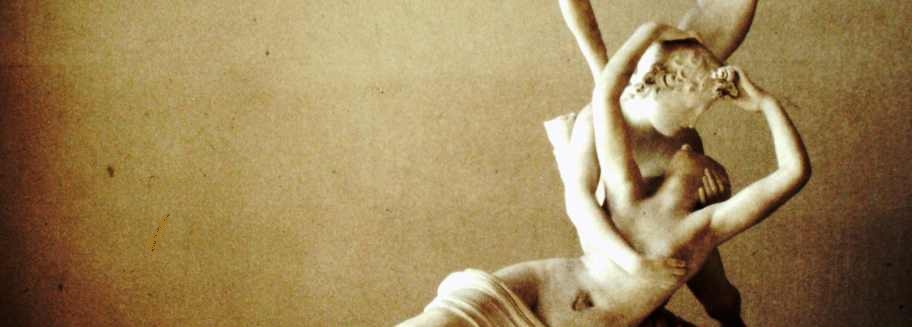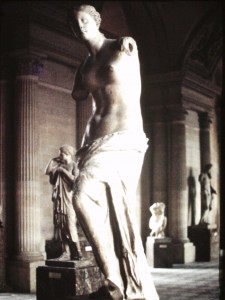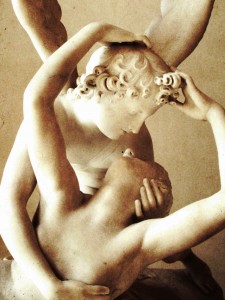Are you a tourist or a traveler? If you’re like most independent — er, what shall we call them? — people who are temporarily absent from their homes? — you might adamantly, even indignantly, answer that you are a traveler. You may even have a long list of reasons why you are NOT A TOURIST. Face it, tourists are the Rodney Dangerfields of the traveling world.
Not wanting to be taken for a tourist sometimes makes people make strange decisions: For example, eschewing a guided tour that might help you understand what you’re looking at. And nowhere is this more true than at the Louvre Museum in Paris.
People insist on trying to see the Louvre without a guide, and that is a big mistake. Ask me how I know.
The Louvre — Without a Guide
On my very first visit to France, many years ago, I was (I thought) decidedly not a “tourist.” I was backpacking and hosteling and Eurail-Passing, second class: no tour buses for this girl! (Well, obviously: On a bread-and-yogurt budget, who could afford a guided tour?) I was having an adventure. As far as I was concerned, I had more in common with someone attempting to climb Mt. Blanc than with those Bermuda-shorted, plaid-shirted bumblers following umbrellas around the buttresses of Notre Dame..
And so, on my first visit to the Louvre, I emphatically walked past the desk where you pay for English language tours, and strode into the museum on my lonesome. I had taken European art history. I knew my Davids from my Gericaults. No mere aimless gazing for me! Indeed, I was on a mission — to find a sculpture, a work by Canova depicting Cupid and Psyche that I had admired in a college art history slide show. Having this mission in mind made me feel smart.
In Your Bucket Because…
- It is one of the world’s greatest art collections.
- The museum’s guided tours are inexpensive, informative, and will orient you and get you to the highlights.
- Good for lovers of art… but the guided tour makes an overwhelming collection accessible to the merely curious, as well.
A couple of hours later, feet aching, eyes blurry, brain in a fog, I had to admit defeat. I had no idea where I’d been, let alone what I’d seen. I’d turned corners that led into rooms filled with Greek statues (or were they Roman?). I’d wandered past endless rows of gilded, haloed popes from the fourteenth century, or maybe the twelfth — who could tell? I’d seen saints and virgins and naked ladies, or naked ladies who were virgins and saints. Somewhere in the the middles of the Grand Gallery, lined with one enormous painting after another, each containing its own infinite world, my brain had shut down. I hadn’t found my Canova. I hadn’t even found the room containing the 18th-Century Italian sculptures. I could check the Louvre off my life-list, but I had no context. The visit meant nothing.
How could it? More than 30,000 works are on display, and if all you did was simply walk and stop to look at each one, you’d be at the job for months. It was like trying to make sense of the night sky.
Rerun with a Guide
A few days later, I returned to the main desk, meekly paid my francs (they were francs back then), and got in line behind a cheerful woman whose job was to give us the Cook’s Tour — The “Best of the Louvre” — in a short hour and a half, and, in the process, orient us so we could find whatever else it was we might want to see on our own. An impossible task, but damned if she didn’t do it.
We climbed up the stairs guarded by the decapitated Winged Victory of Samothrace, created to honor a sea battle. (Just exactly how, I want to know, do you create wind out of stone?) We stopped for a quick visit with Venus de Milo, who has the advantage of still having her head, but takes a clear second place, in my mind. The room that housed the Mona Lisa was crowded, but in the time it took us to make our way to viewing distance, we learned about the Louvre’s other Leonardos and heard an interpretation of la Joconde‘s imagery. And then we headed to the Salle Mollien and the French Romantics: to Gericault’s horrifying and mesmerizing larger-than-life Raft of the Medusa, to iconic masterpieces by David, Delacroix, and Poussin. The Raft of the Medusa was based on a true story of shipwreck, starvation, and cannibalism, we learned, and the artist had even interviewed survivors before trying to paint it.
Equally interesting, however, was that as we made our way around the museum, we stopped at lesser known works. At some thirteenth century gilded wooden panels, we picked up bits and pieces of art history, such as the discovery and early uses of perspective. Walking through the corridors, we learned that the Louvre, originally built as a palace for royals, had been tuned into a museum for the public by the Revolutionary Council in 1793. There was even a bit of French history. Walking past the seemingly endless portraits of heroes and heroics in the Salle Mollien, our guide stopped her discourse on yet another painting depicting a yet another revolution to comment that “In France, we have had many revolutions, so the artists can choose which one they like to paint.”
After the tour, oriented, I easily found my way to the sculpture gallery where Canova’s Cupid and Psyche waited for me — living up to every bit of expectation I’d had since that long-ago art history class.
More Visits, More Tours
Recently, I returned. Now, the main entrance was under I.M. Pei’s Pyramid. My companion didn’t want to take a tour. Like me all those years ago, he had a mission: in his case, the Code of Hammurabi. But I dragged him to the group tours ticket window, and we paid our fee — Euros this time — and once again, I revisited Winged Victory, still guarding her staircase, Venus (still number 2 in my book), the Mona Lisa, and the other must-sees. And along the way we stopped, at different places this time, and learned about different bits and pieces about the iconography of the saints or painting techniques or French history. And once on our way by ourselves, we easily found Hammurabi’s code, and for good measure, I went back and paid a visit to Cupid and Psyche. They hadn’t aged a day.
I don’t really care if you think of yourself as a traveler or a tourist. But do yourself a favor: If you go to the Louvre for the first time, do as the tourists do — and find a guide.
Practicalities
- The main entrance is under the Pyramid du Louvre in the Cour Napoléon. You can avoid long lines by using the Carrousel du Louvre shopping centre entrance (99 rue de Rivoli), or, if you are arriving by metro at the Palais Royal–Musée du Louvre stop, by exiting the metro and entering the Louvre via the Musée du Louvre exit.
- Tickets can be purchased in advance from machines in the Carrousel du Louvre or from ticket offices at the Fnac or Virgin Megastores for a small surcharge.
- Tickets are valid for the whole day, so you can come and go as you please. A two-day Paris Museum Pass is also available, which lets you into dozen of Paris museums — more than you can see in two days!
- Museum tours are usually offered twice a day: The Louvre tours are much less expensive than private guided tours, although many private companies offer specialized or longer private tours.
- The Louvre is closed on Tuesdays.






Hilarious! And I recognize myself in the non-tourist too.
Dito Satu’s comment!